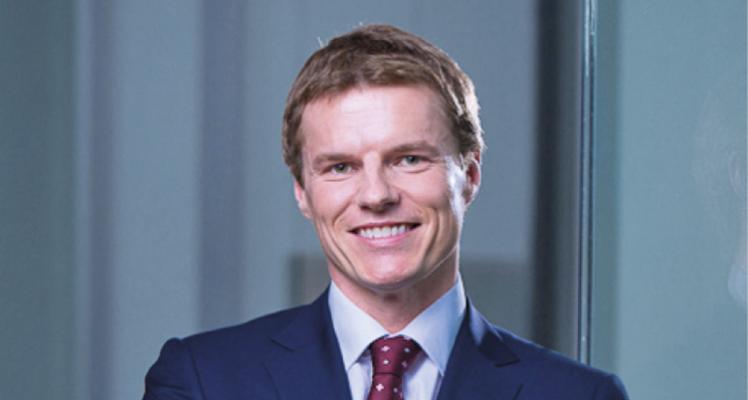
Offshore SPACs: Will Asia be next to witness the boom?
离岸特殊目的收购公司 (SPAC):接下来亚洲会见证繁荣盛况吗?
Special purpose acquisition companies (SPACs) were all the rage in the US in 2020 and early 2021. Following amendments to the SPAC listing regime in Hong Kong and with the Singapore market abuzz with a series of upcoming listings, will Asia be the next to experience the SPAC boom first hand? Here, Singapore managing partner Anthony McKenzie and Hong Kong managing partner Michael Padarin discuss.
2020 年和 2021 年初,特殊目的收购公司 (SPAC) 在美国可谓盛极一时。随着香港对 SPAC 上市制度进行修正以及新加坡市场充斥着一系列即将上市的公司之后,接下来亚洲会经历 SPAC 的上市盛况吗?以下是新加坡办公室管理合伙人麦安腾 (Anthony McKenzie) 和香港办公室管理合伙人彭德贤 (Michael Padarin) 有关此事的讨论。
-
What impact have the amendments for SPAC listing rules in Hong Kong had on perceptions of the market?
Michael Padarin (MP): Hong Kong operates in a hyper-competitive marketplace, with competition for listings from exchanges in the PRC, regional exchanges such as Singapore and also the major US exchanges.
The recent revisions to the Hong Kong Main Board Listing Rules introducing the SPAC regime is an incredibly positive step forward in addressing the competitive disadvantage Hong Kong faced in attracting SPAC sponsors to the market, particularly from the dominant US exchanges.
The new Hong Kong SPAC listing regime seeks a balance, introducing relatively stringent requirements for the quality of both listing candidates and also de-SPAC targets, addressing the commercial needs of SPAC sponsors whilst also raising the bar in terms of investor protections.
Although some commentators have noted that the quality and suitability requirements set out in the new regime are too high and will detract from the commercial attractiveness of the regime, SPAC promotors in the PRC and Kong have largely welcomed the development and see it as increasing the attractiveness and accessibility of Hong Kong as a listing venue.
-
Singapore is also gearing up to listings – what does this mean for businesses and legal work there?
Anthony McKenzie (AM): Last September the Singapore Exchange announced rules that would allow SPACs to list on the bourse's main board. The first three SPACs made their debuts on the SGX last month, notably with each using a Cayman exempted company as the issuer vehicle. These listings mark the first major launch of SPACs in Asia, represent a much-needed revival for the SGX (which has struggled to compete with the Hong Kong and US exchanges for high-profile tech IPOs) and should help SGX shake off its reputation as an exchange dominated by real estate investment trusts and investors searching for yield rather than growth.
SPAC listings have been touted as a more streamlined alternative to traditional IPOs and were all the rage on US exchanges in 2020 and early 2021 until the market cooled and regulators began to apply more scrutiny. Singapore is keen to follow in the footsteps of the US, and its SPAC listing initiative comes amid a boom in tech investment in Southeast Asia, which is home to over 650 million people and fast-growing economies such as Indonesia, the Philippines and Vietnam.
Such regional economic growth and the introduction of Singapore's SPAC framework will no doubt be accompanied by an increased demand for deals and legal services here. As the Singapore market prepares for more SPAC activity, both SPACs and target companies will also look to engage various other service providers in order to address finance, accounting, regulatory and compliance issues at each stage of the SPAC life cycle.
-
How has the Asia market reacted to these developments?
AM: Singapore has plans to position itself as a major Asian hub for SPACs, and is offering a regulatory SPAC framework similar to that in the US, allowing participation of retail investors but with additional safeguards including a minimum subscription level from sponsors. In the US a business consummation or de-SPAC transaction must take place within 24 months of the SPAC's IPO. In Singapore SPACs similarly have 24 months to consummate a de-SPAC transaction, but have the ability to request a 12 month extension if they meet certain requirements.
It is anticipated that several Singaporean and regional APAC companies in high-growth, high-tech sectors will be mature for listing on public markets in the coming years. These companies will provide attractive business combination targets for SPACs. As a first mover in Asia on the SPAC front, Singapore hopes to draw the attention of sponsors and investors looking for new opportunities in the region. However, Singapore is not expecting a rush of SPAC listings like in the US market - instead, it wants to see SPACs steadily being used as a new conduit for high-quality listed companies on SGX over time.
-
What kind of work do SPACs generate for offshore firms?
MP: Cayman Islands companies continue to be favoured by sponsors and investors when considering a SPAC transaction, particularly where the target company is based outside of the US. Cayman Islands companies listed in the US can take advantage of the 'foreign private issuer' rules and exemptions making Cayman companies attractive at the IPO stage; the Cayman Islands also has a very flexible and well tested merger regime which is commonly utilised to effect the ultimate business combination or de-SPAC transaction.
As of June 2021, there were 289 Cayman Islands companies listed on NASDAQ and 185 Cayman Islands companies listed on the New York Stock Exchange. By end of 2020, there were 1,186 Cayman Islands companies listed on the Hong Kong Stock Exchange, which accounted for 60.36% of the aggregate number of listed companies on the Hong Kong Stock Exchange.
As it is now common for the listing vehicle and also the de-SPAC target to be structured as Cayman Islands companies, we are being instructed as Cayman Islands counsel at both the SPAC IPO stage, and also the de-SPAC stage, in each case alongside onshore counsel. Following the de-SPAC transaction there is also an ongoing role as company offshore legal counsel.
With the implementation of the Hong Kong SPACs regime, we are optimistic that the demand for Cayman vehicles will continue to grow.
-
What type of work is taking up the bulk of your time at present?
AM: China's recent crackdown on tech and data-heavy companies and the US SEC's increased scrutiny on SPAC transactions to protect investors have (for now) simmered interest in SPAC listings and traditional IPOs of offshore companies on US exchanges. However, we are actively working with clients exploring both SGX and HKEx SPAC listings, with a number of these expected to come to market early this year.
Asia also continues to be the source of other significant offshore deal flows for us, ranging from fund managers launching offshore funds, to joint ventures, preference share financings and large global M&A transactions (including de-SPAC transactions). Cayman and BVI structures in particular continue to have a central role in these deal flows, having already become embedded in various Asian structures, and Asian sponsors and investors remain responsive to innovative products introduced by these offshore jurisdictions.
-
Is there anything else worth knowing about the current SPAC landscape?
MP: Hong Kong has been accused of being too late to the party as the SPAC market has developed and exploded in the US over the past two years. The introduction of the Hong Kong SPAC listing regime however, provides a welcome new option for both SPAC promotors and investment targets, looking to access local capital sources.
AM: It will be interesting to see if the new SPAC regime injects momentum into the SGX. Although SPACs have lost some lustre in the US, both Singapore and Hong Kong have the wisdom of hindsight after observing the SPAC development in the US and are each betting that their respective SPAC listing frameworks will boost their allure to global investors and regional start-ups. It remains to be seen which Asian exchange will become the region's go-to for SPACs and whether Asia will indeed be the next to see a SPAC boom. What is certain is that Cayman and other offshore jurisdictions such as BVI, Bermuda, Jersey and Guernsey will continue to remain central to global capital and M&A markets as more Asia-based SPACs are launched and large numbers of existing cashed-up SPACs race to identify merger targets.
香港 SPAC 上市规则的修正对市场的认知有何影响?
彭德贤 (Michael Padarin) (MP):香港的市场竞争异常激烈,中国内地交易所、新加坡等区域性交易所以及美国主要交易所都在与之争夺上市机会。
香港最近修订的《香港主板上市规则》引入了特殊目的收购公司 (SPAC) 制度,此举是香港在弥补吸引 SPAC 保荐人(尤其是来自占主导地位美国交易所的保荐人)上市面临的竞争劣势方面迈出的积极一步。
新的香港 SPAC 上市制度力求达到一种平衡,对上市候选公司和 de-SPAC(即,SPAC 并购)交易目标的质量提出了相对严格的要求,如此一来既满足了 SPAC 保荐人的商业需求,又提高了投资者保护标准。
虽然有评论人士指出,新制度制定的质量和适用性标准要求过高,会降低该制度在商业上的吸引力,但是,中国内地和香港的 SPAC 发起人对这一发展表示大力欢迎,并认为它提升了香港作为上市地点的吸引力和可及性。
新加坡也在做好吸引企业前来上市的准备——此举对该地的企业和法律工作意味着什么?
麦安腾 (Anthony McKenzie) (AM):去年 9 月,新加坡交易所宣布 SPAC 在交易所主板上市的规则获得通过。三家 SPAC 上个月在新加坡交易所首次亮相,值得注意的是,这三家公司均使用一家开曼群岛豁免公司作为发行载体。此类上市标志着 SPAC 在亚洲首次大规模推出,并代表着新交所迫切需要复苏(在备受瞩目的科技 IPO 中,新交所很难与香港和美国交易所竞争),有助于其摆脱交易所以房地产投资信托和投资人寻求收益而非增长为目的的交易所的名声。
SPAC 上市一直被吹捧为比传统 IPO 更为精简的替代方式,并于 2020 年和 2021 年初在美国交易所盛极一时,但直到市场降温之后,监管机构才开始对其实施更为严格的审查。新加坡热衷于追随美国的脚步,其 SPAC 上市计划正值东南亚科技投资热潮之际,而东南亚拥有逾 6.5 亿人口,且印尼、菲律宾和越南等经济体增长迅速。
区域经济增长的这一态势和新加坡 SPAC 框架的引入,无疑会带来本地交易和法律服务需求的增加。随着新加坡市场为更多 SPAC 活动做准备,SPAC 和目标公司也将寻求与其他各种服务提供商合作,以解决 SPAC 生命周期每个阶段的财务、会计、监管和合规问题。
亚洲市场对这些发展有何反应?
AM:新加坡计划将自己定位为亚洲开放 SPAC 上市的主要中心,并提供一个类似于在美国上市的 SPAC 监管框架,从而允许散户投资者参与,与此同时制定额外的保障措施,包括保荐人的最低认购水平。在美国,业务达成或 de-SPAC 交易必须在 SPAC IPO 后的 24 个月内完成。 在新加坡,SPAC 同样有 24 个月的时间来完成 de-SPAC 交易,但如满足某些要求,还可申请延期 12 个月。
预计未来数年,新加坡及亚太地区一些高增长、高科技行业的公司将发展成熟并成功上市。这些公司将为 SPAC 提供有吸引力的企业合并目标。作为亚洲地区首个允许 SPAC 上市模式的国家,新加坡希望吸引在该地区寻找新机会的保荐人和投资者的注意。然而,新加坡并不期望像美国市场那样出现大量 SPAC 上市——相反,新加坡希望随着时间的推移,看到 SPAC 逐步成为高质量上市公司在新加坡交易所上市的新渠道。
SPAC 为离岸律所提供什么样的工作机遇?
MP:在考虑进行 SPAC 交易时,开曼群岛公司继续受到保荐人和投资者的青睐,尤其是在目标公司总部位于美国以外的情况下。 在美国上市的开曼群岛公司可利用“外国私人发行人”规则和豁免,使开曼群岛公司在 IPO 阶段获得吸引力;开曼群岛也有一个非常灵活和经过充分测试的合并制度,通常用于实现最终的企业合并或 de-SPAC 交易。
截至 2021 年 6 月,有 289 家开曼群岛公司在纳斯达克上市,185 家开曼群岛公司在纽约证券交易所上市。 截至 2020 年底,开曼群岛在港交所上市的公司有 1186 家,占港交所上市公司总数的 60.36%。
由于上市主体和 de-SPAC 目标公司目前普遍被架构为开曼群岛公司,公司会安排我们在 SPAC IPO 阶段和 de-SPAC 阶段担任开曼群岛律师,且在各种情况下与境内律师合作提供法律服务。 在 de-SPAC 交易之后,公司还会安排人员继续担任公司的离岸法律顾问。
随着香港 SPAC 制度的实施,我们对开曼投资工具的需求将继续增长持乐观态度。
目前什么工作占去您大部分的时间?
AM:中国最近在打击科技公司和数据量大的公司,美国证交会为保护投资者而加强对 SPAC 交易的审查,从而(目前)慢慢引发了人们对 SPAC 上市以及离岸公司在美国交易所进行传统 IPO 的兴趣。然而,我们积极与正在探索在新交所和港交所实现 SPAC 上市的客户合作,并预计其中一些公司将在今年年初启动上市。
亚洲还将继续作为我们其他重要离岸交易流的来源地,范围涵盖基金管理公司离岸基金的推出,以及合资企业、优先股融资和大型全球并购交易(包括 de-SPAC 交易)。特别是开曼群岛和英属维尔京群岛 (BVI) 的架构在这些交易流中将继续发挥核心作用,因其已经嵌入到各种亚洲架构中,而亚洲保荐人和投资者仍会欢迎这些离岸司法管辖区推出的创新产品。
关于 SPAC 目前的情况,还有什么值得了解的吗?
过去两年来,美国的 SPAC 市场不断发展壮大,并呈爆炸式增长,因此有人指责香港在这方面反应不够迅速。然而,对于寻求获得本地资金来源的 SPAC 推动者和投资目标而言,香港 SPAC 上市制度的引入,为其提供了一个备受欢迎的新选择。
AM:新的 SPAC 制度是否会给新交所注入动力,这个问题极具吸引力。尽管 SPAC 在美国已经略显褪色,但新加坡和香港在对 SPAC 在美国的发展进行观察后,都在总结经验的基础上认为各自的 SPAC 上市框架将增强其对全球投资者和地区初创企业的吸引力。亚洲哪个交易所将成为该地区 SPAC 的首选,以及亚洲是否真的会成为 SPAC 繁荣的下一个市场,均尚待观察。可以肯定的是,开曼群岛和其他离岸司法管辖区,如英属维尔京群岛、百慕大群岛、泽西岛和根西岛,还将继续在全球资本和并购市场占据核心地位,因为越来越多的在亚洲运营的 SPAC 在上市,而大量现有的现金充裕的 SPAC 正在争相寻找并购目标。





